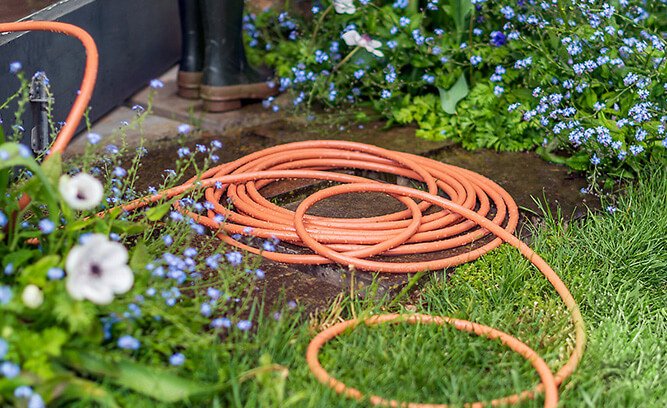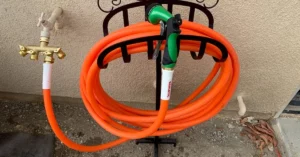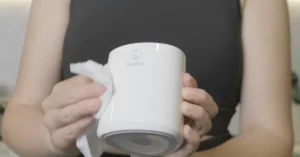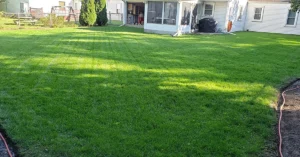
The garden hose has been an indispensable tool for gardeners and landscapers the world over. Every household is never complete without one. This flexible tube carries water and allows the transportation of water from the source to the lawn or the garden. Whether for lawn care or just for hosing down your overeager dog, the garden hose is the definition of handy.
With the bevy of options to choose from, how do you determine what type of garden hose to buy for your garden or yard?
Garden hoses are mainly divided into 3 types, metal garden hoses, expandable hoses and the most common and usually more affordable, rubber hoses. In this article, we will take you into an informative discussion to discover if the more pricey stainless steel garden hose is a much better alternative than the more affordable rubber ones.
1. Price
When it comes to cost, a rubber hose usually costs the least among all garden hose types with a 50-foot length setting you back about $20.
Meanwhile, metal hoses with the same 50-foot length variety cost around $30. So if price is a huge concern for you, a rubber hose may be your best bet.
2. Flexibility and Kink Resistance
Rubber tend to be more suitable for high vibration applications and they are known to be very flexible, ideal for going around corners or maneuvering through different angles and even for easy storage. However, due to the same inherent flexibility and material, rubber hoses usually kink, especially when rolled or looped up for a long time.
Kinking is generally reduced to a considerable extent in stainless steel garden hoses. Due to the material, these hoses have high resistance even with some chemical handling. Bending and kinking generally happens less often in stainless steel hoses because of its inter-locking technology which makes it extra strong and flexible. Maneuvering is also easy-peasy.
3. Burst Pressure, Leaking and Durability
Hoses are no good when they have leaks, do they? Simply put, a torn and leaking hose defeats its purpose.
“Burst pressure” is the measure of strength used for hoses. It refers to the water pressure at which it is highly likely to rupture and leak. Due to its propensity to kink, rubber garden hoses typically do not handle high water pressure as well as stainless steel ones, thus, the rubber garden hose’s burst pressure is lower than that of the stainless steel garden hoses.
Having pets, especially dogs should also be a major consideration in determining what type of garden hose you should go for. Overactive dogs tend to bite and wrestle hoses and this will add further stress to your rubber hose, on top of thorns, jagged corners and tough nails.
The stainless steel shell of a metal hose protects the inner tube from the same damages that might set back and damage a rubber hose. The metal can also take higher water pressure levels in addition to being durable amidst the daily wear and tear a garden hose goes through. Animal bites won’t do much damage to stainless steel hoses too.
4. Hose Diameter and Pressure
Traditional rubber hoses can have bigger diameters up to 3/4 inches compared to a smaller 3/8-inch diameter of stainless steel ones.
But how do we translate this to ease of usage? Well, the bigger the diameter, the heavier the hose weight and the faster the water moves but the pressure will also be weaker. Now, it really just depends on your application requirements. If you want stronger pressure with lesser weight, opt for stainless steel ones.
5. Weather Resistance
Garden hoses are mainly used outdoors though indoor use is not unheard of. The direct sunlight on summer days tends to break down most materials, including rubber. However, in extremely cold weather, rubber hoses tend to fare better than other types.
A metal garden hose such as the stainless steel ones generally withstands full sunlight, thanks to the silver metal shell which reflects the heat and the UV. It also fares well in cold weather but as stated above, its performance and durability decreases in extremely cold days.
Conclusion
Every type of garden hose comes with their own advantages and disadvantages. Ultimately, choosing the perfect one for your household should come down to your preference. Hopefully, with this article, you will be better informed and armed with some knowledge, you can decide on what kind to go for.

High Pressure Water Hose Guide
Contents Can You Use a Normal Hose for a Pressure Washer? Does Hose Diameter Affect Pressure? How do I make my garden hose high pressure?

What Is High Pressure Hose Used For?
Contents What is high pressure hose used for? How much PSI do I need to clean my driveway? What PSI is best for washing cars?

Rechargeable Hot Water Bottles Guide
Contents Are rechargeable hot water-bottles safe? How often should you change your hot water-bottle? How long does a rechargeable hot-water bottle last? How do Electric

Will A Heating Pad Ruin A Memory Foam Mattress?
Contents What is a Heat Mattress? Will a Heating Pad Ruin a Memory Foam Mattress? Buy Heating Pad on Amazon Conclusion One of the things

How Do You Clean A Suckle Portable Bottle Warmer?
Contents How does a suckle bottle warmer work? Do I need a bottle warmer if breastfeeding? How do you clean a suckle portable bottle warmer?

3 Tips for Take Care Lawn You Need to Know
Contents Is It Better To Water Lawn in the Morning or at Night? How Many Days a Week Should You Water Your Lawn? Should You

Emily
Head of Content @NotJustType I am a shopaholic and I am here to use my shopping experience and life skill to share to everyone. If you have any question for life, home, garden, you can let me know!
Share this article
Subscribe for weekly updates
